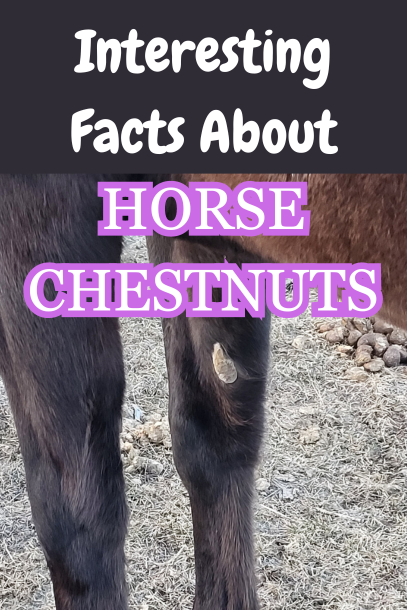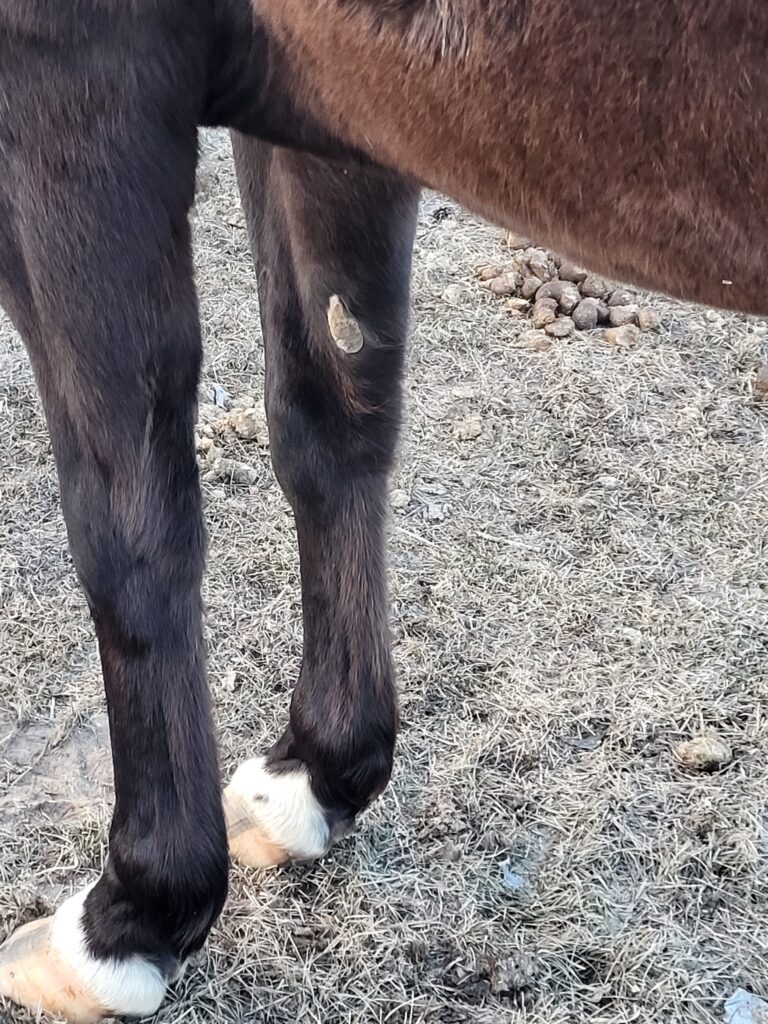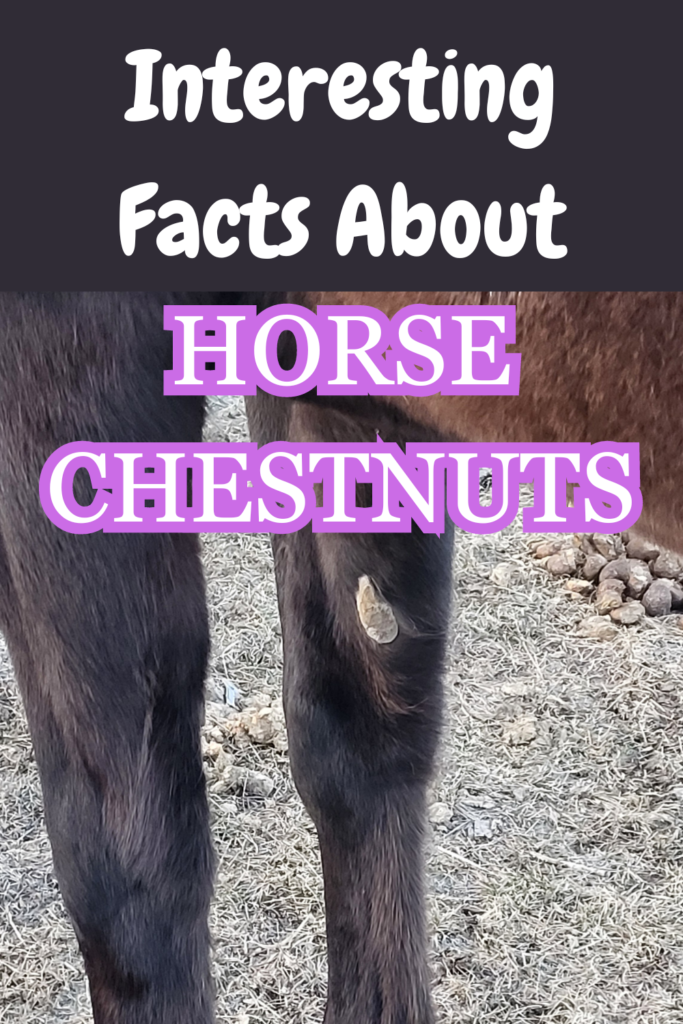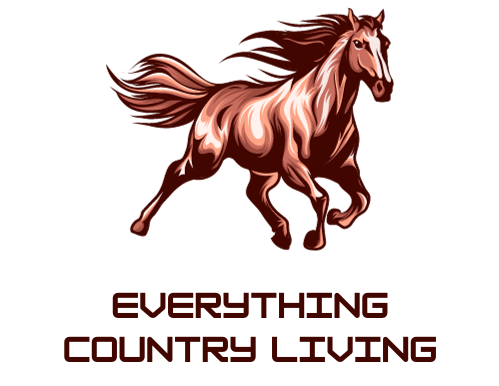
Many equestrians know that horses have chestnuts. But do you know why? In this post I will explain all about chestnuts on a horse and why horses have chestnuts. Find out when they are a problem and can be removed. Chestnuts horse anatomy will be explained.

Chestnuts are often considered to be remnants from prehistoric horses. The pre-evolutionary leg and foot structure of Eohippus. Ergots are also supposedly part of the prehistoric horse hoof structure. To learn more about ergots read this post here.
What do chestnuts look like?
Chestnuts are found above the knees on the front legs and just below the inside of the hock on the hind legs. They are hard, usually smooth hairless growths.
Some horse breeds only have chestnuts on the front legs such as the Icelandic and Caspian ponies and horse relatives such as donkeys and zebras.
Sometimes referred to as “night eyes,” these formations were historically linked to various theories, including the notion that they helped horses see in the dark. Which is clearly a myth.

Can chestnuts be removed?
Like fingerprints on humans, chestnuts are unique in shape and composition to each horse. While some horses’ chestnuts grow rapidly and can be peeled or trimmed for aesthetic reasons. Some horses have smooth little chestnuts that are barely visible.
Horse chestnut care and removal
Some horse will rub them and peel them off. However, you should not completely peel them back to the skin as this will make the horse very sensitive. You can trim them down with a hoof rasp or peel layers off that are too over grown.
It is not necessary to do anything with chestnuts. They usually are not a problem and don’t get overgrown. They can be left alone. If your horse has larger ones and you want them to look nicer then you can peel them off when they are wet after you bathe your horse or rub baby oil on them to soften them first before peeling the extra skin off.
What is the purpose of a chestnut on a horse
One proposed theory is that during the evolution of the horse there was a reduction in the number of toes to one, along with other changes to the ancestral equid foot, and the chestnut is thought to correspond to the wrist pad of dogs and cats. Alternatively, it may be a scent gland similar to those found in some deer and other animals that no longer serves a purpose in horses.
Considering the unique characteristics of chestnuts, you may wonder why do horses have them? Beyond their potential role in individual identification, some theories suggest functional purposes. It is speculated that horses may use front chestnuts to scratch and rub their faces and that these structures may serve as scent glands like that of llamas.
Chestnuts have a distinct smell. An old tale says you can carry a horse chestnut in your pocket and horses will come up to you because they are attracted to the smell—an old cowboy trick that made them easier to catch.
Questions People ask about chestnuts on a horse:
Can horses eat their chestnuts?
There are two different kind of horse chestnuts. Ones that grow on trees and one that grows on horses. Not to be confused. No horses do not eat their chestnuts.
Can you peel off a horse’s chestnuts?
Yes, you can peel off the layers of a chestnut, but you should not peel them to the bare skin.
What causes chestnuts on horses?
They are natural growths and appear with age.
Should you remove chestnuts on a horse?
No, their is no need to remove horse chestnuts.

Check out these other posts while you are here!
Wrap up of chestnuts on a horse
As you can see chestnuts have had some interesting theories made about them from helping horses see in the night to being leftover toes from evolution. Whatever their reason for being on horses they are a normal part of horse anatomy that can be trimmed up for aesthetic reasons. I hope you found this post helpful.
Here are some other posts you should check out here:
Reference
